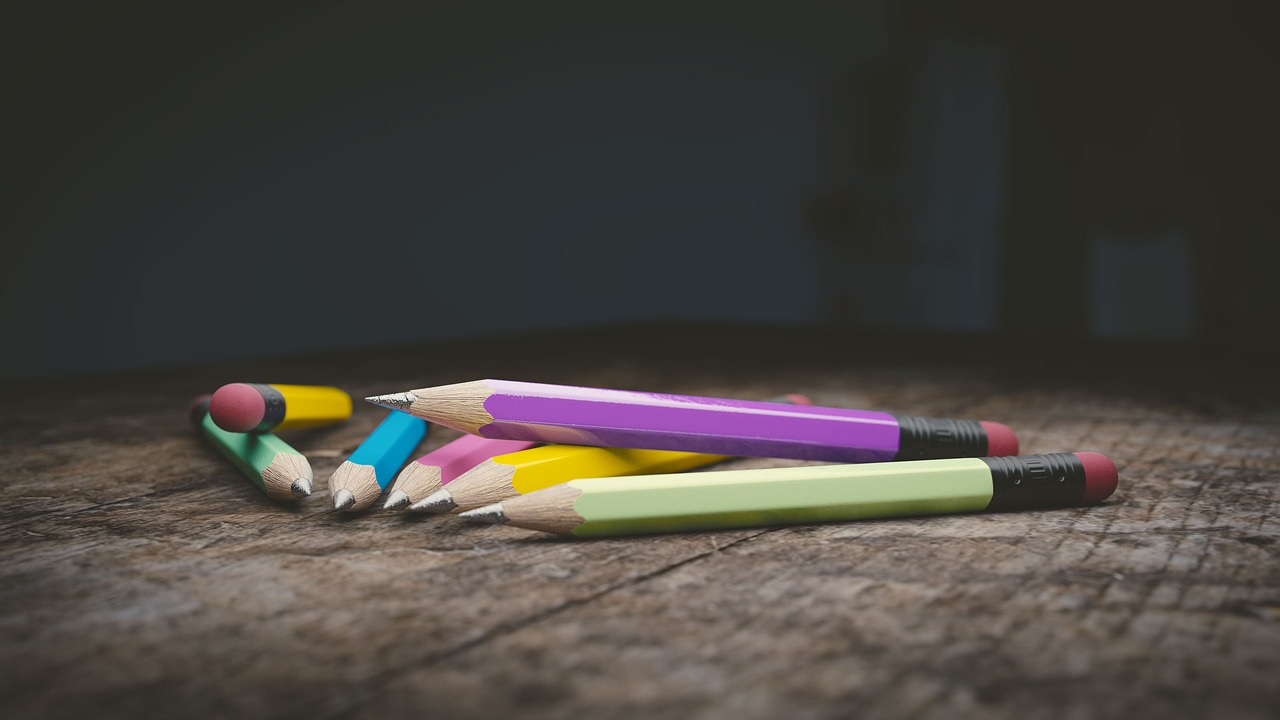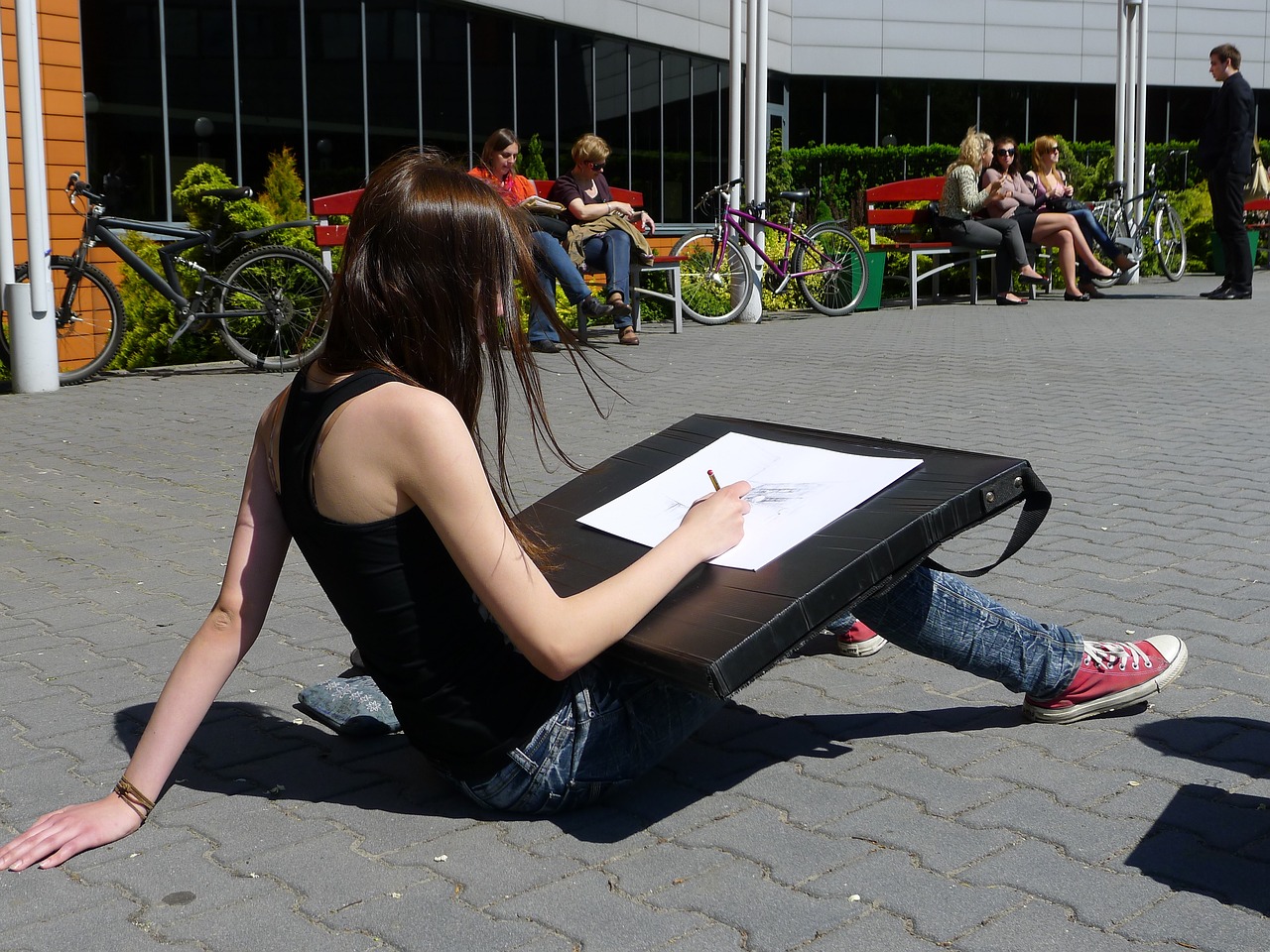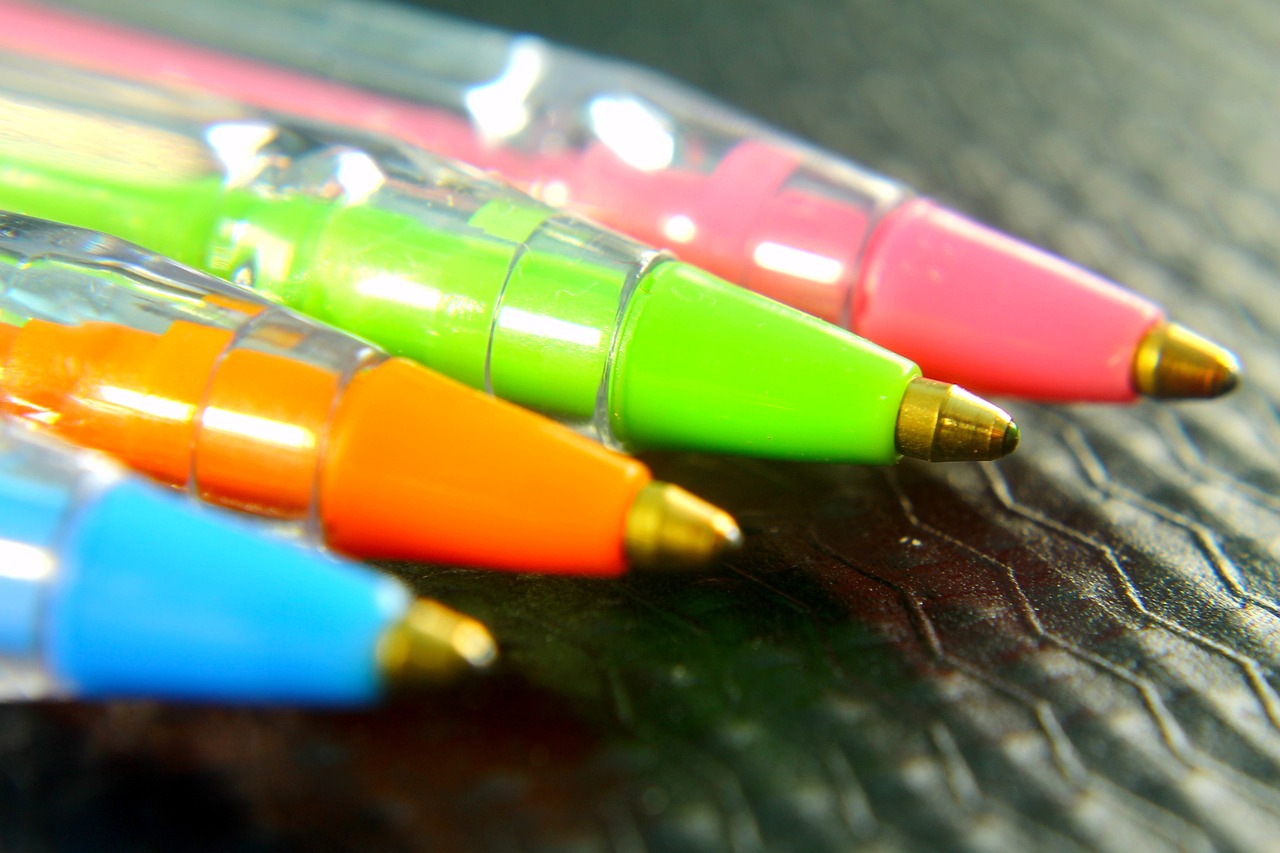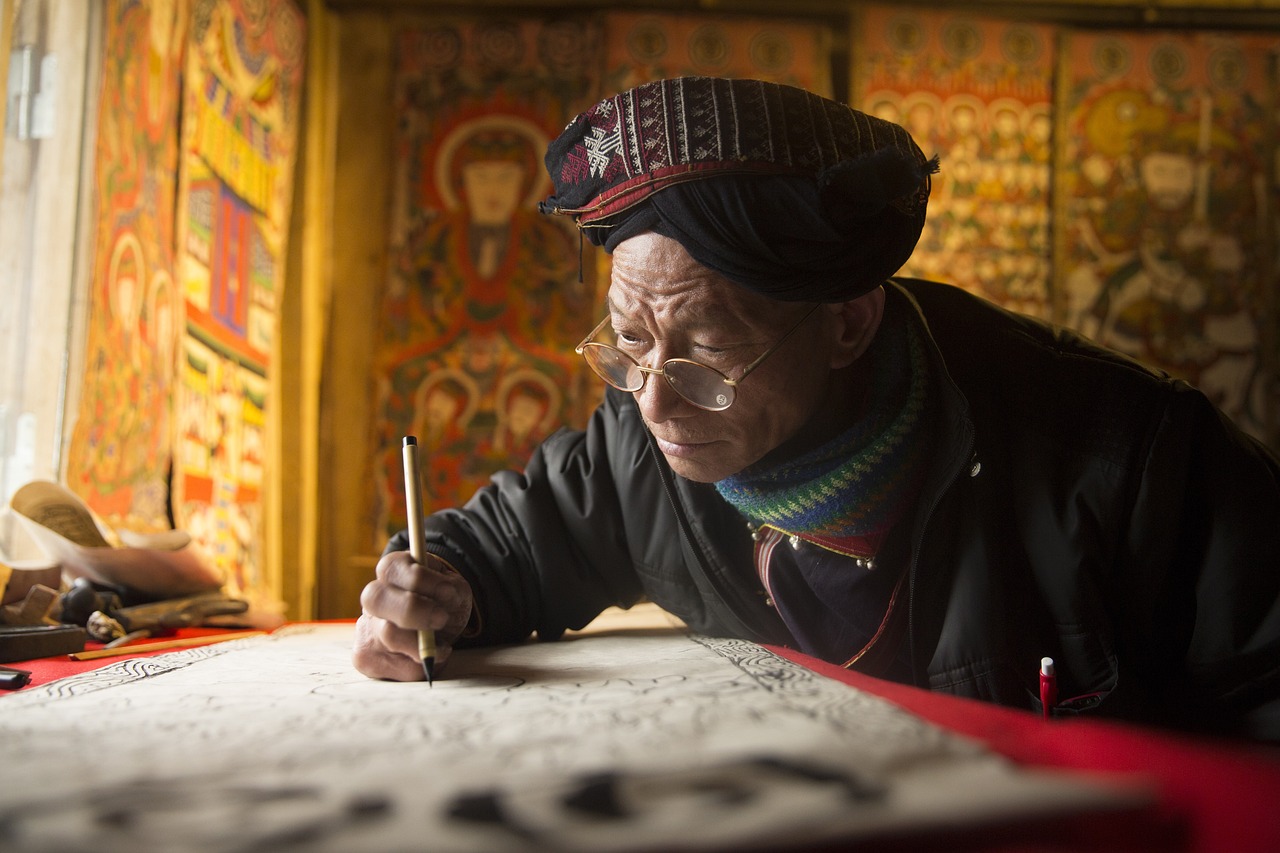Learning to Draw: Tips for Absolute Beginners
Have you ever stared at a blank piece of paper, pencil in hand, and felt a mix of excitement and fear? You're not alone! Starting your drawing journey can feel daunting, but it’s also a thrilling adventure waiting to unfold. This article is here to provide you with essential tips and techniques that will help you unlock your creativity and express yourself through art. Whether you dream of sketching lifelike portraits or whimsical cartoons, the right guidance can set you on the path to becoming a confident artist.
First things first, let’s talk about what you need to get started. It’s not about having the fanciest tools or the most expensive sketchbooks; it’s about understanding the basic materials that can help you bring your ideas to life. Think of your drawing tools as your trusty sidekicks on this creative journey. You’ll want to invest in a few good quality pencils, a reliable eraser, and a sketchbook that inspires you. The right tools can make all the difference, allowing your imagination to flow freely onto the page.
Once you've gathered your materials, it’s time to dive into the heart of drawing: mastering the basic techniques. Every artist, no matter how seasoned, started with the fundamentals. Techniques like shading, line drawing, and understanding perspective are essential skills that will elevate your artwork. Imagine these techniques as the building blocks of your artistic foundation. As you become more comfortable with them, you’ll find that your confidence and creativity begin to flourish.
Shading, for instance, is a fantastic way to add depth and dimension to your drawings. Think of it as the magic that transforms a flat image into a three-dimensional masterpiece. Techniques such as hatching and blending will become your best friends in this process. Hatching involves drawing closely spaced parallel lines, while cross-hatching adds another layer of lines at an angle, creating texture and depth. On the other hand, blending allows for smooth transitions between light and dark areas, giving your work that extra touch of realism.
Understanding perspective is another crucial aspect of drawing. It’s what allows you to create a sense of depth in your artwork, making it feel more lifelike. Imagine standing in a long hallway; the walls converge as they recede into the distance. This is the essence of perspective! Learning about one-point and two-point perspective will help you depict scenes accurately and make your drawings pop.
Now, let’s get real for a moment—consistent practice is vital for improvement. Just like any skill, the more you draw, the better you’ll become. Setting aside dedicated time for drawing can help you develop a routine that fosters growth. Think about it: if you want to get better at anything, practice is key! Consider creating a drawing schedule that works for you, whether it’s a few minutes every day or longer sessions a couple of times a week.
As you embark on this artistic journey, it’s also important to set clear goals for improvement. Establishing achievable objectives can motivate you to draw regularly. Maybe you want to master a specific technique or complete a certain number of sketches each month. Tracking your progress can be incredibly rewarding and will give you a sense of accomplishment as you see your skills evolve over time.
Lastly, don’t underestimate the power of community. Joining a drawing community can provide invaluable encouragement and feedback. Whether it’s a local art group or an online forum, being part of a supportive network can help you learn from others, share your work, and stay motivated. After all, art is often more enjoyable when shared with fellow enthusiasts!
- What materials do I need to start drawing?
You’ll need basic tools like pencils, erasers, and sketchbooks to get started. - How often should I practice drawing?
Regular practice is crucial; try to set aside time daily or weekly. - What are the best techniques for beginners?
Focus on mastering shading, line drawing, and perspective. - Should I join a drawing community?
Yes! Being part of a community can provide support and inspiration.

Essential Drawing Tools
When diving into the world of drawing, having the right tools can make all the difference. Think of your drawing tools as the paintbrushes of a painter; they help you translate your imagination onto paper. For absolute beginners, it's essential to start with the basics. Here’s a rundown of the fundamental materials you’ll need to kickstart your artistic journey.
First and foremost, pencils are your best friends. They come in various hardness levels, from soft to hard, which can affect the darkness and texture of your lines. A good starting set would include:
- HB Pencil: Great for general sketching.
- 2B Pencil: Perfect for darker lines and shading.
- 4H Pencil: Excellent for fine details.
Next up, we have erasers. While it might seem counterintuitive, a high-quality eraser is just as important as your pencils. You’ll want to have a kneaded eraser for lifting graphite without damaging your paper and a standard white eraser for clean corrections. These tools will help you refine your sketches and make adjustments as you go.
Don’t forget about the sketchbook! This is where your creativity will come to life. Choose a sketchbook that feels good in your hands and has a paper weight that can handle various mediums. A heavier paper (around 200 gsm) is ideal for pencil work and light ink. The size of your sketchbook is also important; a portable one can be taken anywhere, allowing you to draw on the go!
For those who want to add a splash of color to their drawings, consider investing in some colored pencils or watercolors. Colored pencils offer great control and are perfect for layering colors, while watercolors can bring a vibrant, fluid quality to your artwork. Experimenting with these mediums can open up a whole new dimension to your drawing practice.
Lastly, having a blending tool can elevate your shading techniques. Blending stumps or tortillons are great for smoothing out pencil marks and creating soft transitions between light and dark areas. You can even use your fingers in a pinch, but remember to keep them clean to avoid smudging your artwork!
In summary, starting your drawing journey doesn’t require a toolbox full of fancy gadgets. With just a few essential tools, you can begin to explore your creativity and express yourself through art. The beauty of drawing is that it’s accessible to everyone, regardless of skill level. So, gather your materials, find a comfortable spot, and let your imagination flow!

Basic Drawing Techniques
When it comes to drawing, mastering some basic techniques can make a world of difference in your artistic journey. Think of these techniques as the building blocks of your creative expression. Just like a musician needs to learn scales and chords before composing a masterpiece, you too need to familiarize yourself with fundamental drawing skills. Whether you're sketching a simple still life or attempting a complex portrait, having a solid grasp of these techniques will enhance your ability to translate your imagination onto paper.
One of the most essential techniques to learn is shading. Shading is what transforms a flat image into a three-dimensional object. It adds depth and dimension, making your drawings come alive. Imagine a simple circle; without shading, it looks like a flat disc. But with the right shading techniques, you can create the illusion of a sphere, complete with highlights and shadows. Beginners often start with basic shading methods, which include hatching, cross-hatching, and blending.
Let’s dive deeper into these shading techniques. Hatching involves drawing closely spaced parallel lines to create a shadow effect. The closer the lines are, the darker the area appears. On the other hand, cross-hatching takes this a step further by adding another layer of lines at an angle. This creates even more texture and depth in your artwork. For example, if you were drawing a ball, you could use hatching on one side to indicate shadow and cross-hatching on the other to show where the light hits.
Another important technique is blending. Blending allows for smooth transitions between light and dark areas, which is crucial for realistic drawings. You can achieve this effect using blending stumps, which are tools made of tightly rolled paper, or even your fingers! Imagine you’re painting with a brush; blending helps create soft gradients, making your artwork feel more lifelike. For instance, when shading a face, blending can help you transition from the light on the forehead to the shadows under the chin seamlessly.
Once you have a handle on shading, the next step is to grasp the concept of perspective. Understanding perspective is vital for creating realistic drawings. It’s like learning how to see the world through an artist’s eyes. There are two main types of perspective that every beginner should know: one-point and two-point perspective. One-point perspective is useful for drawing objects that face you directly, like a road or a railway track. You’ll notice that as the lines go back into the distance, they converge at a single point on the horizon. On the other hand, two-point perspective is perfect for drawing objects at an angle, like a building viewed from the corner. This technique adds depth and makes your drawings feel more dynamic.
In summary, mastering these is essential for any aspiring artist. By focusing on shading, blending, and perspective, you can significantly improve your drawing skills. Remember, practice is key! The more you experiment with these techniques, the more confident you’ll become in your abilities. So grab your pencils, sketchbooks, and let your creativity flow!
Q: How often should I practice drawing?
A: Consistency is key! Try to set aside at least 30 minutes a day for drawing to see significant improvement over time.
Q: Do I need expensive materials to start drawing?
A: Not at all! You can start with basic materials like a simple pencil and paper. As you progress, you can invest in higher-quality tools.
Q: What if I make mistakes?
A: Mistakes are part of the learning process! Embrace them as opportunities to grow and improve your skills.

Shading Techniques
Shading is one of the most exciting aspects of drawing, as it adds depth and dimension to your artwork. Imagine your drawing as a flat pancake; without shading, it remains one-dimensional and lifeless. But once you start adding shadows and highlights, it transforms into a delicious, fluffy stack that practically jumps off the page! Understanding different shading techniques is essential for every beginner who wants to elevate their art. So, let's dive into the world of shading and discover how to make your drawings pop!
One of the most fundamental shading techniques is hatching. This method involves drawing closely spaced parallel lines. The closer the lines are to each other, the darker the area will appear. It's like creating a tiny fence on your paper, and as you add more lines, that fence becomes more solid and imposing. On the other hand, cross-hatching takes this technique a step further. By adding another layer of lines at an angle, you create even more texture and depth. Think of it as weaving a basket; each layer adds complexity and richness to your creation.
But what if you want a softer look? That's where blending comes into play. Blending is all about creating smooth transitions between light and dark areas, making your drawings look more realistic. You can use various tools for blending, such as blending stumps, which are like tiny magic wands for artists, or even your fingers! Yes, your fingers can be great for smudging and softening those harsh lines. Just remember, blending is like making a smoothie; you want to mix everything together until it’s smooth and creamy.
To help you visualize these techniques, here's a simple table that summarizes the different shading methods:
| Technique | Description | Best For |
|---|---|---|
| Hatching | Drawing closely spaced parallel lines | Creating texture and shadows |
| Cross-Hatching | Adding another layer of lines at an angle | Enhancing depth and complexity |
| Blending | Smoothing transitions between light and dark | Achieving realism and soft gradients |
In conclusion, mastering shading techniques is crucial for bringing your drawings to life. Whether you choose to hatch, cross-hatch, or blend, each method offers unique benefits that can enhance the overall quality of your artwork. So grab your pencils, practice these techniques, and watch as your drawings transform from flat to fabulous!
- What materials do I need for shading? You can start with basic pencils, blending stumps, and erasers. Experiment with different tools to find what works best for you!
- How can I practice shading? Try drawing simple shapes and apply different shading techniques to each one. This will help you understand how light interacts with objects.
- Is it necessary to use blending tools? Not at all! While blending tools can help achieve smoother transitions, using your fingers or even a soft cloth can also yield great results.

Hatching and Cross-Hatching
When it comes to adding depth and texture to your drawings, hatching and cross-hatching are two of the most fundamental techniques that every aspiring artist should master. These methods not only enhance the visual appeal of your artwork but also allow you to convey light, shadow, and form more effectively. So, what exactly are these techniques, and how can you implement them in your drawings?
Hatching involves the use of closely spaced parallel lines to create areas of shading. The closer the lines are to each other, the darker the area appears. This technique is incredibly versatile; you can adjust the spacing and thickness of the lines to achieve different effects. For instance, if you want a softer shadow, you might space the lines further apart. On the other hand, if you need a darker area, you can draw the lines closer together. It's like cooking—adding a pinch of this or a dash of that until you get just the right flavor.
Cross-hatching takes things a step further. By layering lines in a crisscross pattern, you create an even richer texture and depth. This technique is particularly useful for rendering complex forms and adding dimension to your work. Imagine it as weaving a tapestry; each layer adds its own unique quality, resulting in a more intricate and captivating piece of art.
Here’s a quick comparison of the two techniques:
| Technique | Description | Effect |
|---|---|---|
| Hatching | Parallel lines drawn closely together | Creates a smooth gradient of shadow |
| Cross-Hatching | Intersecting lines at various angles | Produces a richer texture and depth |
To get started, grab a sketchbook and a pencil, and practice these techniques. Begin by drawing simple shapes like spheres or cubes. Focus on how the light interacts with these forms and apply hatching and cross-hatching to represent the shadows. It might feel a bit awkward at first, but like any skill, it improves with practice. Remember, the goal is to observe how light affects objects in the real world and replicate that in your drawings.
As you become more comfortable with hatching and cross-hatching, try experimenting with different pressures on your pencil. Lighter pressure can create softer lines, while heavier pressure yields darker, more defined lines. This variation adds another layer of complexity to your work, making it more dynamic and engaging.
In conclusion, mastering hatching and cross-hatching can significantly elevate your drawing skills. These techniques are not just about creating shadows; they’re about understanding light and form. So, the next time you sit down to draw, remember to embrace these methods and let your creativity flow!
- What is the difference between hatching and cross-hatching? Hatching consists of parallel lines, while cross-hatching involves intersecting lines to create texture and depth.
- How can I practice these techniques? Start with simple shapes and gradually introduce more complex forms, focusing on how light and shadow interact.
- Can I use hatching and cross-hatching with different mediums? Absolutely! These techniques can be applied with pencils, ink, charcoal, and even digital tools.

Blending Techniques
Blending is a magical technique that can transform your drawings from flat and lifeless to vibrant and full of depth. Imagine the way a painter mixes colors on a palette to create a beautiful sunset; blending in drawing works similarly. It involves smoothing the transitions between light and dark areas, allowing your artwork to breathe and come to life. For beginners, mastering blending techniques is crucial, as it enables you to create realistic textures and shadows that add a professional touch to your work.
There are several methods to achieve blending in your drawings, and each has its own unique charm. One of the most popular ways is to use a blending stump, a tool made of tightly rolled paper that helps to smudge graphite or charcoal smoothly. You can also use your fingers, but be cautious—this method can sometimes lead to unwanted smudges on your paper. To get started with blending, here’s a quick overview of some effective techniques:
- Direct Blending: This involves using a blending stump or your fingers to gently rub over the areas where you want to transition colors. Start with light pressure and gradually increase it as needed.
- Layering: Apply multiple layers of pencil or charcoal, allowing each layer to dry before blending. This technique gives you more control over the darkness and texture.
- Using a Tortillon: A tortillon is a tapered tool made of paper that is excellent for blending fine details. It allows you to reach into tight spaces and achieve a smooth finish.
As you practice these techniques, remember that blending is not just about creating smooth transitions; it’s also about understanding light and shadow. Pay attention to how light interacts with different surfaces, and try to replicate that in your drawings. For example, the way light hits a shiny apple will differ from how it reflects off a matte surface like a piece of cloth. Experiment with different pressure levels and blending tools to find what works best for you.
To help you visualize the impact of blending, consider this simple table that outlines the differences between blended and non-blended shading:
| Aspect | Blended Shading | Non-Blended Shading |
|---|---|---|
| Texture | Smooth and soft transitions | Harsh and abrupt lines |
| Realism | More lifelike and three-dimensional | Flat and less realistic |
| Depth | Enhanced depth perception | Limited depth perception |
As you delve deeper into blending techniques, don’t forget to have fun! Drawing is a journey of self-expression, and blending can be one of the most enjoyable aspects of it. So grab your tools, practice regularly, and watch your skills blossom!
Q: What is the best tool for blending?
A: While many artists prefer blending stumps for their precision, your fingers can also work well for larger areas. Experiment to see which method you like best!
Q: Can I blend colored pencils?
A: Absolutely! Blending colored pencils can create beautiful gradients. You can use a colorless blender pencil or even a light touch of solvent to enhance the blending effect.
Q: How do I avoid smudging my work?
A: To prevent smudging, always allow your pencil marks to dry before blending. Additionally, consider using fixative spray after completing your drawing.

Understanding Perspective
When it comes to drawing, perspective is like the secret sauce that makes your artwork pop! It’s all about creating an illusion of depth and space on a flat surface. Imagine you’re looking down a long road; the way the sides converge in the distance is a perfect example of perspective at work. For beginners, mastering perspective can feel daunting, but once you grasp the basics, it opens up a whole new world of possibilities for your art.
At its core, perspective is about how objects appear smaller as they get further away. There are two main types of perspective that every budding artist should familiarize themselves with: one-point perspective and two-point perspective. Let’s break these down:
- One-Point Perspective: This is the simplest form of perspective. Picture a straight road or railway track; it appears to narrow down to a single point on the horizon. This point is called the vanishing point. All lines that are parallel to the viewer’s line of sight converge at this point. It’s commonly used in drawing interiors, where all lines lead to a single point.
- Two-Point Perspective: When you want to depict a corner view of an object or scene, two-point perspective comes into play. Here, you’ll have two vanishing points on the horizon line. This technique is great for drawing buildings or complex structures, as it gives a more dynamic feel to your artwork.
To illustrate these concepts, here's a simple table comparing the two types of perspective:
| Type of Perspective | Description | Common Uses |
|---|---|---|
| One-Point Perspective | All lines converge at a single vanishing point. | Interiors, roads, and railway tracks. |
| Two-Point Perspective | Lines converge at two vanishing points on the horizon. | Buildings, corners, and complex objects. |
Now that you have a basic understanding of perspective, it’s time to practice! Start by sketching simple shapes like boxes or cubes in both one-point and two-point perspectives. Pay attention to how the shapes change as they recede into the distance. Remember, the more you practice, the more natural it will feel!
Don’t forget, perspective isn’t just about straight lines and vanishing points; it’s also about how you perceive objects in relation to each other. For instance, objects closer to you should appear larger than those further away. This concept of scale is crucial in creating a realistic scene. Think of it as a game of visual tricks—your goal is to convince the viewer that they are looking into a three-dimensional space!
As you explore perspective, try to incorporate it into your drawings gradually. Start with simple scenes and slowly add complexity as you become more comfortable. You’ll find that understanding perspective not only enhances your drawings but also boosts your confidence as an artist.
Q: How can I improve my perspective drawing skills?
A: The best way to improve is through consistent practice. Start with simple shapes and gradually move to more complex scenes. Use reference images and try to replicate the perspective you see.
Q: Are there any tools that can help with perspective drawing?
A: Yes! Tools like a ruler, T-square, and perspective grids can be incredibly helpful. You can also use digital drawing software that has built-in perspective guides.
Q: What if I struggle with getting the vanishing points right?
A: Don't worry! It takes time to get the hang of it. Use light pencil lines to sketch your vanishing points and guidelines first. You can always erase and adjust as needed.

Practicing Drawing Regularly
When it comes to honing your drawing skills, consistency is key. Just like learning a musical instrument or mastering a sport, regular practice is essential for improvement. Think of drawing as a muscle that needs to be exercised; the more you draw, the stronger and more refined your skills will become. So, how do you ensure that you make drawing a regular part of your life? Here are some strategies that can help.
First and foremost, setting aside dedicated time for drawing is crucial. Whether it’s 15 minutes a day or a few hours a week, having a specific time slot can create a routine that makes drawing feel less like a chore and more like a rewarding part of your day. Consider your schedule and find a time that works best for you. Maybe you're a morning person who can sketch with a cup of coffee, or perhaps evenings are your creative hours. Whatever it is, stick to it!
Next, setting clear goals can provide direction and motivation. Ask yourself, “What do I want to achieve with my drawing?” It could be anything from mastering a specific technique, completing a certain number of sketches, or even finishing a larger project like a painting. By breaking your goals down into manageable tasks, you can track your progress and celebrate small victories along the way. For example, you might aim to:
- Complete a sketch every day for a month.
- Experiment with a new drawing technique each week.
- Join a drawing challenge online.
Another fantastic way to ensure you practice regularly is to join a drawing community. Whether it’s a local art class, an online forum, or a social media group, being part of a community can provide you with encouragement, inspiration, and feedback. Sharing your work with others can motivate you to keep going, and you may learn valuable tips from fellow artists. Plus, the sense of camaraderie can make the journey more enjoyable.
Lastly, don’t forget to keep your drawing space inviting and clutter-free. A dedicated area for your art supplies can make it easier to dive into your practice without distractions. Surrounding yourself with inspiration—like your favorite artworks, motivational quotes, or even nature—can spark creativity and make your drawing sessions more enjoyable.
In summary, practicing drawing regularly is about creating a routine that works for you, setting achievable goals, engaging with a community, and fostering an inspiring environment. Remember, every stroke of the pencil brings you one step closer to becoming the artist you aspire to be!
Q: How often should I practice drawing?
A: Ideally, aim to practice drawing a little every day. Even short sessions can be incredibly beneficial.
Q: What if I don’t have time every day?
A: It’s perfectly fine! Try to set aside time a few times a week. Consistency is more important than frequency.
Q: How can I stay motivated to draw?
A: Setting goals, joining a community, and celebrating your progress can help keep your motivation high.
Q: What if I feel stuck or uninspired?
A: Take breaks, explore new styles, or try drawing something completely different to reignite your creativity!

Setting Goals for Improvement
When it comes to learning how to draw, setting goals is like having a roadmap for your creative journey. Without clear objectives, you may find yourself wandering aimlessly, unsure of what to focus on next. So, how do you establish effective goals that will propel your drawing skills forward? First, think about what you want to achieve. Are you aiming to master a specific technique, like shading or perspective? Or perhaps you want to complete a certain number of sketches each week? Whatever it is, make sure your goals are S.M.A.R.T. — Specific, Measurable, Achievable, Relevant, and Time-bound.
For example, instead of saying, “I want to get better at drawing,” you might say, “I will practice drawing for 30 minutes every day for the next month.” This statement is clear and provides a solid framework for tracking your progress. To help you visualize your goals, consider creating a simple
| Goal | Action Steps | Deadline | Status |
|---|---|---|---|
| Improve shading skills | Practice hatching and blending techniques | 1 month | In Progress |
| Complete 10 sketches | Sketch daily, focusing on different subjects | 2 weeks | Not Started |
| Join a drawing community | Research local or online groups | 1 week | Completed |
As you work through your goals, it’s essential to regularly assess your progress. This can be done through self-reflection or by sharing your work with others for feedback. Ask yourself questions like, “What techniques am I improving in?” or “Where do I still struggle?” This kind of introspection not only helps you stay motivated but also guides you in adjusting your goals as needed.
Don’t forget to celebrate your achievements, no matter how small! Each step forward is a victory and deserves recognition. Maybe treat yourself to a new sketchbook or some fancy pencils when you complete a goal. This positive reinforcement can fuel your passion for drawing and keep you engaged in your practice.
Lastly, remember that the journey is just as important as the destination. Drawing is a skill that develops over time, and setting goals can make the process more enjoyable and fulfilling. So grab your pencils, outline those objectives, and let your creativity flow!
- How often should I set new goals for my drawing practice? It's a good idea to review and set new goals every month or so, depending on your progress and experience level.
- Can I have multiple goals at once? Absolutely! Just make sure they are manageable. Focusing on too many goals at once can lead to overwhelm.
- What if I don’t achieve my goals? Don’t be discouraged! Use it as a learning experience. Reflect on what obstacles you faced and adjust your goals accordingly.

Joining a Drawing Community
When you're starting your drawing journey, it can sometimes feel like you're all alone in a vast ocean of creativity. But what if I told you that there's a whole community out there just waiting to welcome you with open arms? Joining a drawing community can be one of the most rewarding experiences for beginners. Not only does it provide a space to share your work, but it also opens the door to valuable feedback and support from fellow artists.
Imagine being part of a group where everyone shares the same passion for drawing. You can exchange tips, techniques, and even stories about your artistic challenges. It’s like having a group of cheerleaders who understand the struggles and triumphs of learning to draw. Whether you join a local art class or an online forum, being part of a community can significantly boost your motivation and creativity.
Here are some of the benefits of joining a drawing community:
- Feedback and Growth: Receiving constructive criticism from others can help you identify areas for improvement. It’s like having a personal coach who guides you on your artistic journey.
- Networking Opportunities: Connecting with other artists can lead to collaborations, exhibitions, and even friendships that can last a lifetime.
- Inspiration: Surrounding yourself with creative individuals can spark new ideas and techniques you may not have considered before.
- Accountability: Being part of a community encourages you to draw regularly. You’ll want to share your progress and keep up with others.
Moreover, joining a drawing community can also introduce you to various resources. Many groups offer workshops, tutorials, and challenges that can enhance your skills. You might even find mentors willing to share their expertise and help you navigate the world of art. Whether you're sharing your sketches on social media, participating in local art shows, or simply engaging in discussions about your favorite artists, every interaction can contribute to your growth as a creator.
So, how do you find the right community for you? Start by exploring local art classes, community centers, or online platforms such as social media groups and art forums. Websites like DeviantArt, Reddit, and Instagram are excellent places to connect with other artists. Just remember, the goal is to find a space where you feel comfortable sharing your work and engaging with others. Don’t be afraid to put yourself out there—your artistic journey is unique, and sharing it can inspire others, too!
In conclusion, joining a drawing community can transform your experience as a beginner artist. It’s not just about improving your skills; it’s about building connections, gaining confidence, and ultimately finding joy in the process of creating art. So, take that leap and find your tribe—you might just discover a wellspring of inspiration and support waiting for you!
Q: How do I find a drawing community near me?
A: You can start by checking local art schools, community centers, or libraries for classes and workshops. Additionally, searching online for local art groups on social media platforms can yield great results.
Q: What if I’m shy about sharing my work?
A: It's completely normal to feel shy! Start by sharing smaller pieces or even asking for feedback on works in progress. Most communities are supportive and encouraging, which can help you build confidence over time.
Q: Are online communities as beneficial as local ones?
A: Absolutely! Online communities can provide a broader range of perspectives and resources. Plus, you can connect with artists from all over the world, which can be incredibly enriching.
Q: How often should I participate in community activities?
A: It depends on your schedule, but try to engage regularly. Whether it’s sharing your work, participating in challenges, or attending events, consistent involvement can enhance your experience.
Frequently Asked Questions
- What are the essential tools I need to start drawing?
To kickstart your drawing journey, you'll need a few basic tools. A set of quality pencils, ranging from hard to soft leads, is a must. Don't forget a good eraser for those inevitable mistakes, and a sketchbook to capture your ideas. Optional tools include blending stumps for shading and a ruler for perspective work.
- How often should I practice drawing?
Consistency is key! Aim to draw a little every day, even if it's just for 10-15 minutes. Setting aside dedicated time each week can help you build a habit. The more you practice, the better you'll get. Think of it like exercising - small, regular workouts lead to big improvements over time!
- What are some basic drawing techniques I should learn?
As a beginner, focus on mastering fundamental techniques like line drawing, shading, and understanding perspective. Start with simple shapes and gradually work your way up to more complex subjects. Techniques like hatching and blending can add depth, while grasping perspective will help you create realistic scenes.
- Can I improve my drawing skills by joining a community?
Absolutely! Being part of a drawing community can offer you invaluable support and feedback. Whether online or in-person, connecting with fellow artists can inspire you, provide constructive criticism, and keep you motivated. Sharing your work and learning from others can accelerate your progress!
- How do I set goals for improving my drawing?
Setting clear, achievable goals is essential for improvement. Start by identifying specific skills you want to work on, like shading or perspective. Track your progress regularly and celebrate small victories. This will keep you motivated and focused on your artistic journey!



















